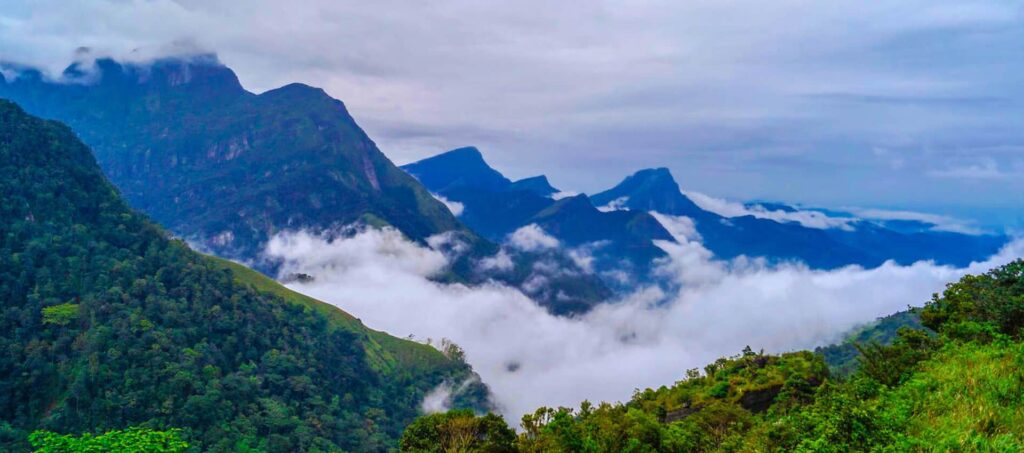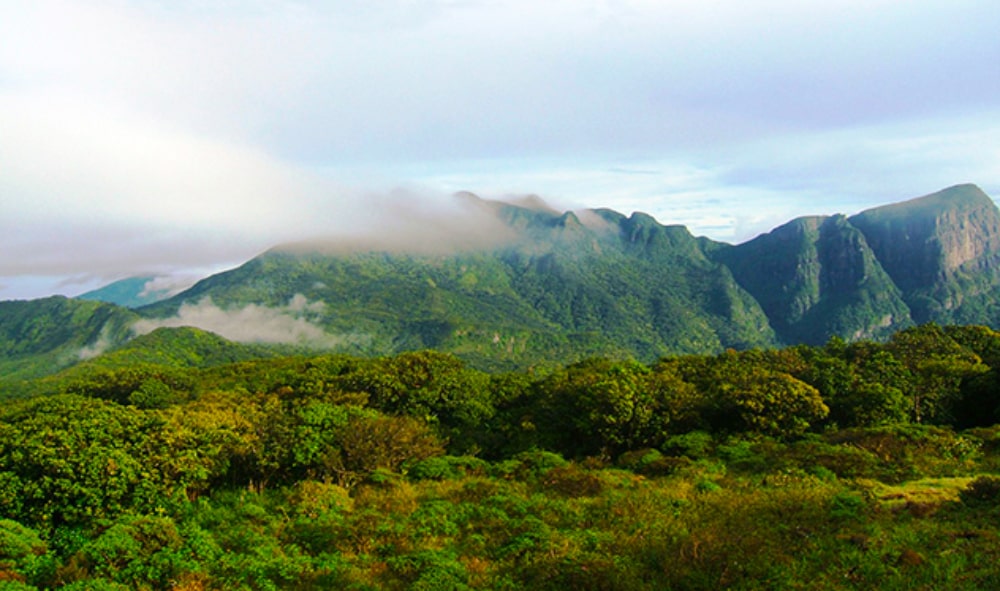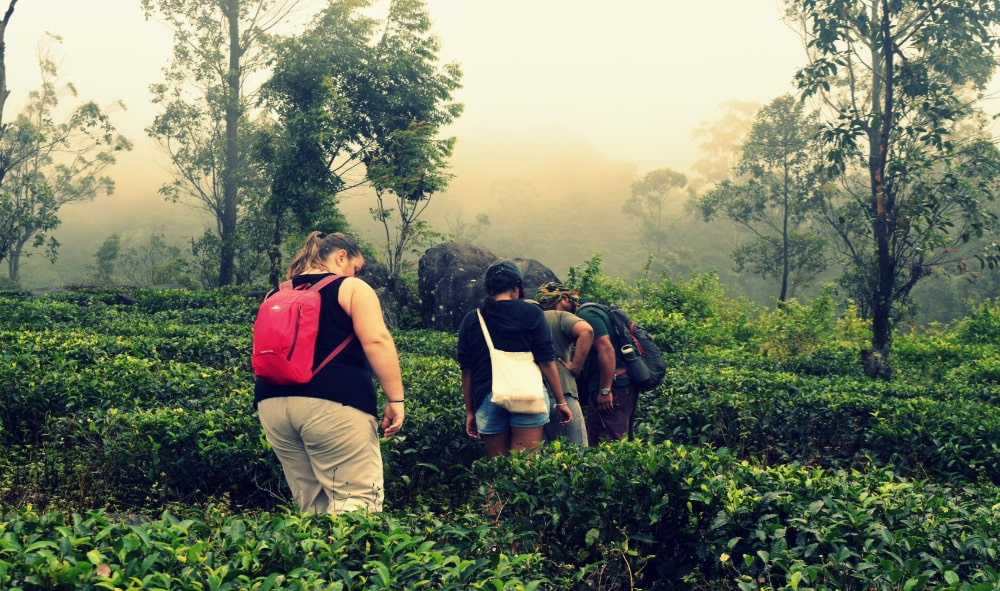Knuckles Mountain Range
Sum up
The Knuckles mountain range, so called because its appearance resembles the knuckles of a clenched fist is located to the east of Kandy and Matale in central Sri Lanka, and consists of five mountain peaks and several other smaller peaks.
Duration: 2 to 7 hours
Best Time: Year-round
Additional Information
Walking in the Knuckles is immensely satisfying for this is some of Sri Lanka’s finest walking country. Trek through dense forests, along rivers and waterfalls, past tea plantations and terraced paddy fields and visit some of the small rural village communities. Panoramic views of misty mountains, stunning valleys, ancient rock formations, lush forests, crystal clear streams, beautiful animal and plant life, paddy fields, traditional villages and hospitable people make the Knuckles an unmissable experience.
A wide variety of rare and endemic flora and fauna also makes this World Heritage Conservation area a storehouse of rich biodiversity.
The Knuckles can be approached via the A26 from Kandy to Hunnas Giriya, where a rough minor road leads to Corbett’s Gap which reveals magnificent views of the Knuckles range. From Corbett’s Gap the road that leads to the village of Meemure can also be travelled by an appropriate vehicle. The Knuckles can also be reached from Matale via Rattota and Riversten, and from Wattegama via Panwila.
Weather in the Knuckles mountain range is unpredictable and can change within a few minutes. December to February has a moderate possibility of rain but still attracts trekkers; March to September has lower rainfall; September to November is best avoided. Temperatures range from 6 to 35C. Inexperienced walkers in the Knuckles should take a guide. Take careful note of weather forecasts and follow all sensible trekker precautions.
The Knuckles mountain range is also home to traditional villagers who live in 37 ancient villages, some of which only received electricity in the 21st century. The existence of theses indigenous community depends upon cultivation of rice, spices and Chena.
Popular Activities
Intrepid Hike in Knuckles Sum up The main element of this extended activity is a half-day hike through thick jungle to an …
Kandy tea hills trek Sum up The tea estates around Deltota in the Kandyan foothills are some of the oldest in Sri …
Kandy City Walking Tour Sum up Kandy is the capital of and gateway to Sri Lanka’s majestic verdant hill country, a spiralling …
Kandy Temple and City Walk Sum up Walk back in time through the historic hill capital of Kandy and visit the temple …
Play a Sri Lankan drum Sum up Sri Lanka resonates to the sound of drumming, and with the help of Red Dot, …
Degaldoruwa Cave Temple Sum up When you first enter the temple, you are immediately stunned by the beautiful paintings on the walls …
Kandyan Cultural Show Sum up Watch a Kandyan cultural show and be awed by the spectacular dance, acrobatics, costumes and music. Held …
Temple of the Tooth Sum up Discover one of the great legends of Sri Lanka by visiting the Temple of the Tooth …
Temple of the Tooth with a local Sum up Explore the Temple of the Tooth, one of the busiest attractions in Sri …
Guided Tour of a Spice Farm Sum up Sri Lanka has long been known for its spices, coveted throughout history by people …
Kandy Restaurant Guide Sum up Kandy’s central location has led to its cuisine being influenced by the culinary traditions from all regions …
Victoria Golf and Country Resort Sum up There are golf courses that are scenic. There are many that are beautiful. But the …
Explore Sri Lanka’s Village Life Sum up Escape to Sri Lanka’s Kandyan foothills and spend a morning exploring the picturesque rural countryside …
Kandy to the Hill Country by train Sum up Take the train from Kandy into Sri Lanka’s dramatic hills and experience one …
Knuckles Mountain Range Sum up The Knuckles mountain range, so called because its appearance resembles the knuckles of a clenched fist is …
Millenium Elephant Foundation Sum up Visit the Millenium Elephant Foundation which works to improve the care, protection and treatment of captive elephants …
Royal Botanical Gardens Sum up The Peradeniya Royal Botanical Gardens, located just outside of Kandy, are Sri Lanka’s largest landscaped gardens, spanning …
Kandy Perahera Sum up The Kandy Perahera, a ritual that has been taking place for hundreds of years, is an experience of …
Sri Lanka Plantation Walk Sum up Explore the vast, tranquil estate of your host, a highly-engaging journalist who has many stories to …
Hike in the Knuckles Sum up The Knuckles Mountain Range, so named because of its resemblance to the knuckles of a clenched …



























